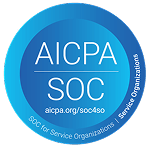FAQs
 What specific financial aid opportunities are available exclusively for Indian students studying in the U.S.?
What specific financial aid opportunities are available exclusively for Indian students studying in the U.S.?
Indian students have access to several country-specific funding options, including the Fulbright-Nehru Master’s Fellowships, which provide up to US$38,000 (INR 31,66,000) annually for select disciplines. The Inlaks Shivdasani Foundation offers scholarships up to US$100,000 (INR 83,33,000) specifically for Indian graduates attending top U.S. universities. The JN Tata Endowment provides loan scholarships of approximately INR 10,00,000 with partial loan conversion to grants based on academic performance. Additionally, discipline-specific opportunities exist, such as the Dr. Reddy’s Foundation scholarships for pharmaceutical studies and Jindal Fellowships for public policy students. Also, MPOWER Financing awards up to US$5000 to promising STEM postgraduate students from India through its Udaan India Scholarship. Many premier Indian corporations, including Reliance, Tata and Mahindra, offer employee children education assistance programs that can be used for U.S. education, typically covering 60-75% of tuition costs for qualified applicants.
 How do Indian bank education loans differ from U.S.-based loans for studying abroad?
How do Indian bank education loans differ from U.S.-based loans for studying abroad?
Indian bank education loans typically offer lower interest rates compared to U.S. private loans for international students but require substantial collateral such as property with a value exceeding INR 7,50,000. Indian loans offer significant tax benefits under Section 80E, allowing unlimited interest deduction for eight years. Indian banks generally disburse funds directly to parents in rupees, requiring currency conversion and international wire transfers, whereas U.S. lenders pay institutions directly in dollars. Repayment timelines differ significantly – Indian loans typically require repayment to begin within six months of graduation with five-to-seven-year terms, while many U.S. lenders designed for international students offer more flexible 10-15-year repayment periods and may allow interest-only payments during study periods. Additionally, many Indian banks require a local co-applicant (typically parents), while some U.S. lenders offer no-cosigner options based on academic potential.
 What strategies can Indian students use to maximize institutional scholarships at U.S. universities?
What strategies can Indian students use to maximize institutional scholarships at U.S. universities?
Indian students can significantly increase their institutional scholarship chances by applying to universities where they would represent geographic diversity – schools with few Indian enrollees often offer higher scholarships to increase international representation. Target second-tier universities (ranked 50-100), which typically offer more generous funding to attract top international talent compared to Ivy League institutions. Engineering, computer science and mathematics students should highlight specific technical skills that align with departmental research priorities and mention willingness to work as research or teaching assistants. Apply during early action/decision rounds when more funding is available, and prepare a separate “scholarship resume” highlighting leadership roles, community service in India and unique cultural contributions. Consider applying to universities with established Indian alumni networks that fund dedicated scholarships – schools like Purdue in Illinois and Texas A&M have active Indian alumni associations offering significant financial support specifically for incoming Indian students.
 How should Indian students approach the financial verification process required for both visa applications and university admission?
How should Indian students approach the financial verification process required for both visa applications and university admission?
Indian students must carefully coordinate financial documentation to satisfy both university and visa requirements, as inconsistencies between these submissions are a common reason for visa rejections. Begin by obtaining an official bank statement showing liquid funds covering at least one full year of expenses (approximately US$60,000-US$80,000 or INR 50,00,000-66,60,000 depending on the institution) with funds having been in the account for at least six months. For educational loans, obtain a sanction letter specifying the approved amount rather than just a pre-approval. MPOWER Financing provides a free visa support letter. If using multiple funding sources, create a detailed funding chart showing exactly how each semester will be covered. Have all financial documents professionally translated if originally in a regional Indian language and notarized with an apostille if required. Many successful applicants prepare two versions of financial documentation – one showing just the minimum required for I-20 issuance to reduce estimated visa costs, and a more comprehensive package for the visa interview demonstrating multiple security funds. Additionally, be prepared to explain family income sources, especially if family businesses are involved, with supporting documentation like income tax returns for the past three years.
 What merit-based funding opportunities are available specifically for Indian graduate students with significant work experience?
What merit-based funding opportunities are available specifically for Indian graduate students with significant work experience?
Indian graduate students with substantial professional experience have access to several specialized funding sources, including the prestigious Tata Scholarship for Cornell University, which provides full funding for select Indian graduate students with at least three years of professional experience. The Aga Khan Foundation offers scholarships of up to US$25,000 (INR 20,83,000) annually, giving preference to mid-career professionals returning to academia. Many U.S. business schools, including Kellogg, Wharton and Chicago Booth, have India-specific scholarships ranging from US$10,000-US$50,000 (INR 8,33,000-41,65,000) targeting professionals with five plus years of experience, particularly those from underrepresented sectors like health care, public service and sustainable development. For executive and professional master’s programs, the Ratan Tata Fellowship provides significant funding specifically for Indian public service professionals. Additionally, many Indian corporations, including Infosys, TCS and Wipro, offer employer-sponsored education programs for employees pursuing graduate education abroad, typically requiring a commitment to return to the company for two to three years after graduation. Professional organizations like the National Association of Software and Service Companies (NASSCOM) also provide industry-specific scholarships for experienced technology professionals pursuing advanced degrees in emerging fields like artificial intelligence, cybersecurity and data science.
